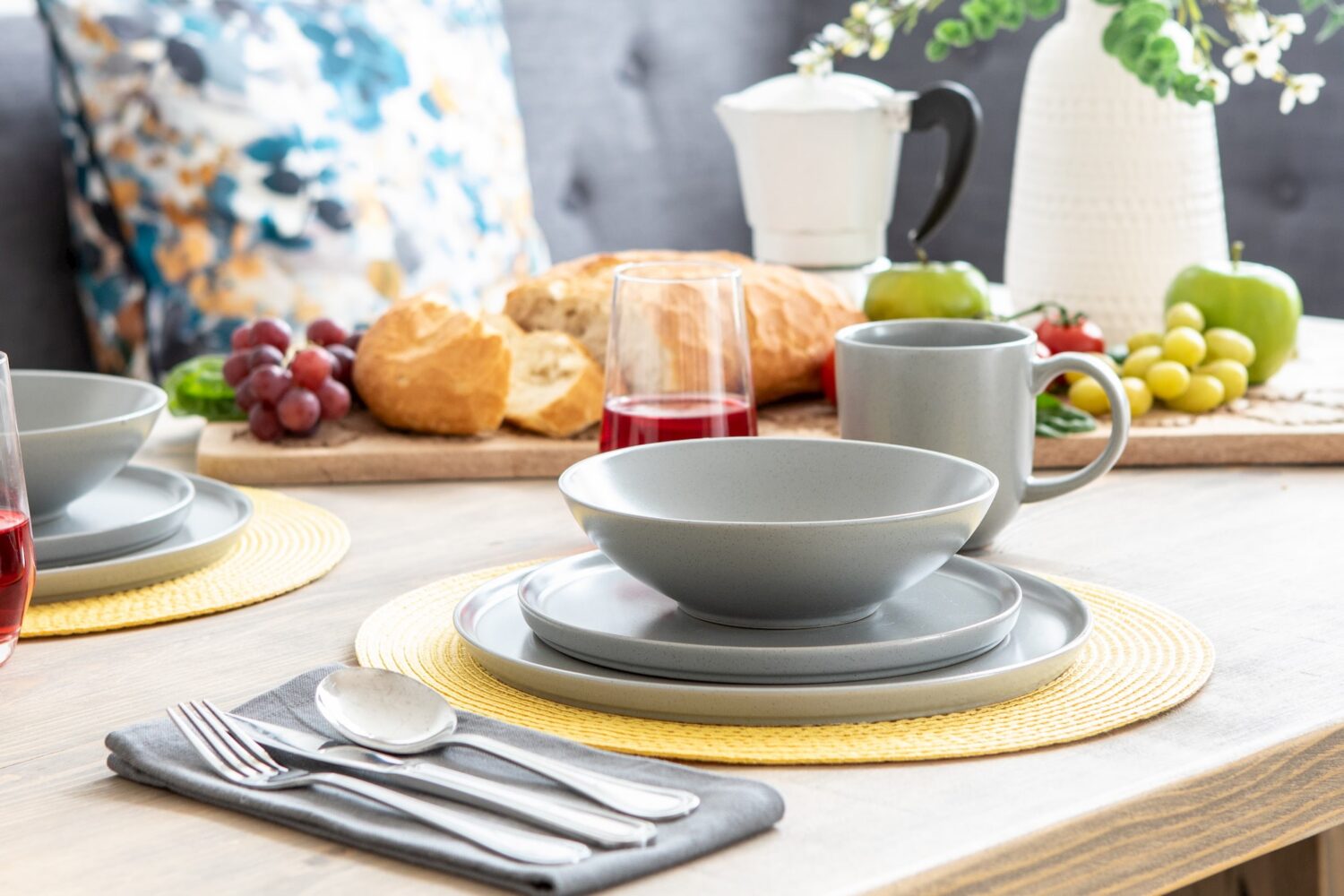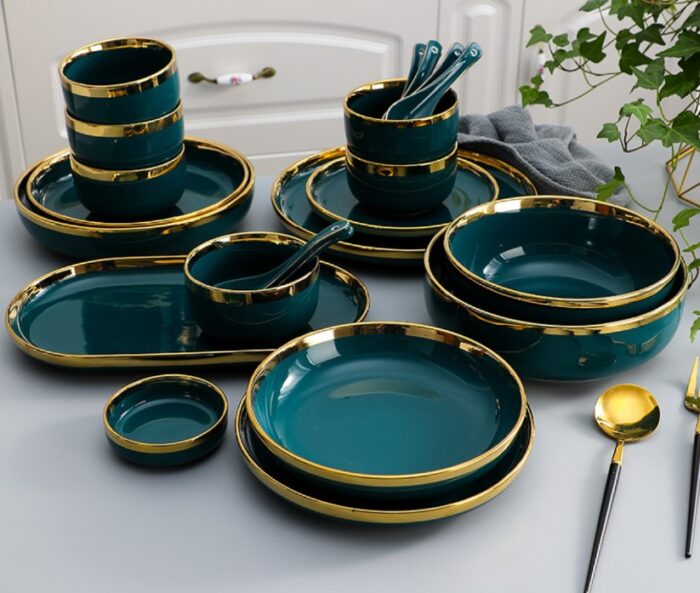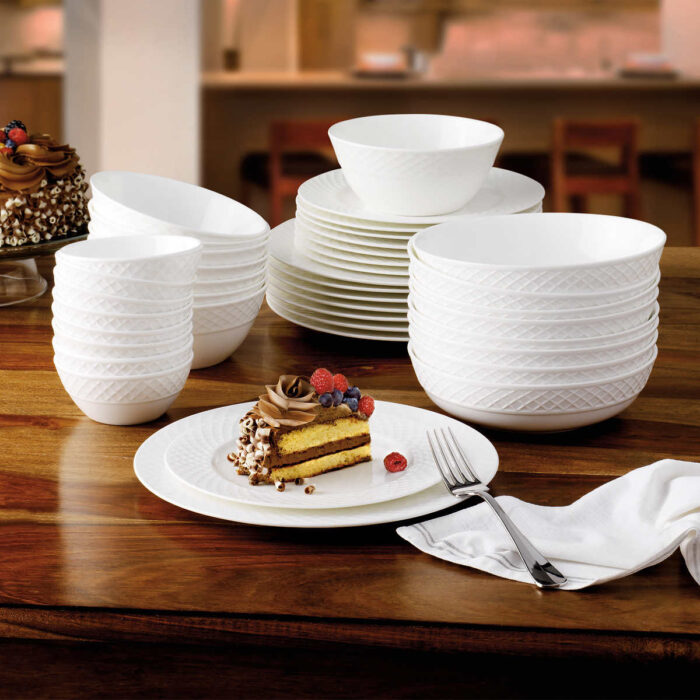
Dinnerware is a collection of dishes that includes plates and bowls used for dining. These are created of ceramics and come in various shapes, sizes, and colors. Ceramic dinnerware and beverageware are stain-resistant and easy to clean. This leak-proof ceramic beverage dinnerware is suitable for hot and cold beverages like tea, soup, and curd.
The management of network-connected businesses involved in the ultimate provision of goods and services required by the end customer is known as the supply chain. It includes all raw material, work-in-process inventory, and finished goods transit and storage from manufacture to consumption.
Based on the distribution channels dinnerware business could be categorized as online or offline. Offline distribution channels include specialty shops, supermarkets, hypermarkets, and department stores.
Due to the rising global proliferation of the internet and smartphones, sales of ceramic tableware via online channels are rapidly increasing. Consumers are increasingly purchasing ceramic tableware online due to many features such as ease of buying, savings, and better payment and return policies.
Due to ease of access and doorstep service, the young working population with hectic schedules prefers internet channels as their buying medium over conventional channels. It is likely to drive market expansion in the coming years.
4 Ways To Start Dinnerware Supply Chain

Things to keep in mind before starting a dinnerware business are:
1. Conduct Through Market Research
Before you dive into creating a dinnerware business, consider the market’s expectations. On the one hand, if you’re selling handmade items right from home, you’re dealing with a small market.
Targeting the market for multipurpose ceramics, on the other hand, will put you up against mass-produced pots. You must assess whether people will buy your pricey and sophisticatedly designed soup bowl or go to a retail store to buy a machine-made bowl.
Balance these factors with the items you’re passionate about producing. Take the time to research and determine the market that is a good fit for your product.
2. Simplify Productline
To balance sales potential, instead of developing several product lines with a fixed price range, create a restricted product line with a wide price range.
Make different sorts of products within a product line of your dinnerware business if you wish to extend it, such as goblets, plates, or bowls. Customers prefer sets over individual pieces. A complete handmade dinnerware set (soup or salad plate, dinner plate, lunch plate, and cup) can significantly increase sales. Many use handmade dinnerware as decorative pieces in the kitchen, following kitchen trends.
Avoid time-consuming pitfalls such as special orders for individual components or the creation of replacement goods. It is impossible to imitate the techniques of another established business. Furthermore, rely on recognized vendors who give dependable customer service.

3. Keep Production Process Uncomplicated
Simplify your production process to retain consistency and reduce faults. Maintain simplicity in glaze and clay body formulations by rounding off formula numbers. Components like dyes, coloring oxides, stains, binders, and suspending agents must be applied in the exact given formula. Even minor variations in the cobalt oxide utilized can result in drastically different results.
Place your equipment in a known production location near the wedging table. After that, place the table close to the pottery wheel. Compared to fossil-fueled kilns, electric kilns generate more consistent outcomes and do not require the consideration of numerous fuel and air combinations.
4. Select The Best Suitable Business Model For Business
Being a wholesale dinnerware supplier, you can sell your dinnerware to stores or clients directly. You can also rent a booth at craft shows and trade shows. One of the best ceramic marketing ideas is to invite clients to your studio’s kiln opening.
Customers can purchase plates and glasses directly from your store in a festive setting. The less handling, the fewer broken pieces, yet offering workshop classes allows consumers to test out the pottery wheel. Consider creating an e-commerce website for your ceramics or establishing an online storefront on an arts and crafts marketplace.
While many shopkeepers are wary of digital technology, running an internet shop is a low-cost option. It expands your reach substantially and increases sales of your dinnerware. One of the best marketing ideas is advertising your company using Facebook and Instagram pages and adverts.
6 Ways To Maintain Supply Chain

Here are things to do before starting a supply chain :
1. Managing Demand
Demand management plays a significant role in running a seamless supply chain. Often the demand is less, yet numerous wastes occur from poor supply chain management.
2. Developing Manufacturing Excellence
It deals with providing high-quality, low-cost products and services in a global economy. It is a significant challenge for producers. Generally, suppliers strive to improve product quality, significantly shorten product development cycles, boost productivity growth, drive product and process innovation, and adapt swiftly to changing customer expectations.
3. Well-Maintained Logistics

Maintaining world-class logistics is a significant problem in the Indian market. Half of the products are broken and damaged in transportation to the hotel or restaurant. An efficient supply chain is more than just a technique to cut operational costs, increase margins, and deliver items faster.
The most challenging issue for any business is logistical management. The majority of eateries do not have enough storage space. The restaurants must have faithful suppliers that supply supplies as and when needed, ensuring that there are no surplus or short stockpiles. It also allows the dinnerware business to provide the best quality items.
4. Minimizing Risk
Risk is part of all business. A great deal of risk is involved in maintaining a standard supply chain for dinnerware. Ideally, if the risk is handled at the beginning, nothing adversely affects operations or profits. As a result, you must know about identifying and managing the risk accordingly.
5. Product innovation and technological application
To prosper, you must innovate, according to a business expert. Dinnerware businesses can reduce supply chain flaws with proper technological developments.
6. Human Resources
It all comes down to teamwork and people. A successful brand relies on the right people doing the right things in the right way. Supply chain management is to focus on quality, time, and cost outputs by world-class companies.

Conclusion
A key driving element is the increasing number of residences due to population increase and rapid development. Furthermore, the expanding number of hotels, restaurants and other eating options will drive regional market expansion in the projection period.
There are few entry barriers in the market. However, if you’ve exhausted your circle of friends and relatives, you’ll need to expand to a competitive market. You may grow a profitable dinnerware business by maintaining the production process simple and efficient, and by marketing wisely.








